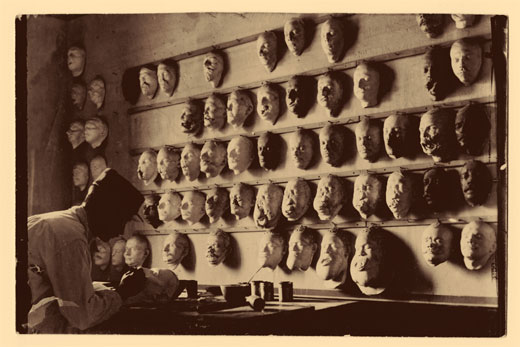I think I’ve posted about Harold Gillies before, but his life’s work was so wonderful it bears repeating.
Writing in the 1950s, Sir Harold Gillies, a pioneer in the art of facial reconstruction and modern plastic surgery, recalled his war service: “Unlike the student of today, who is weaned on small scar excisions and graduates to harelips, we were suddenly asked to produce half a face.” A New Zealander by birth, Gillies was 32 and working as a surgeon in London when the war began, but he left shortly afterward to serve in field ambulances in Belgium and France. In Paris, the opportunity to observe a celebrated facial surgeon at work, together with the field experience that had revealed the shocking physical toll of this new war, led to his determination to specialize in facial reconstruction. Plastic surgery, which aims to restore both function and form to deformities, was, at the war’s outset, crudely practiced, with little real attention given to aesthetics. Gillies, working with artists who created likenesses and sculptures of what the men had looked like before their injuries, strove to restore, as much as possible, a mutilated man’s original face. Kathleen Scott, a noted sculptress and the widow of Capt. Robert Falcon Scott of Antarctica fame, volunteered to help Gillies, declaring with characteristic aplomb that the “men without noses are very beautiful, like antique marbles.”
via.

